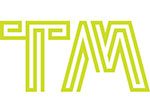You’ve Got a Powerful Brand, Now Protect it!
Many locally and regionally owned and operated businesses—businesses just like yours—have survived for years with a vulnerability that could adversely effect their path of success at any time. This silent predator pops up when you least expect it, costing you thousands of dollars and a lot of lost branding momentum.
More than an inconvenient headache, a future trademark or copyright dispute is an avoidable reality if you take preventive measures now.
Invest some time in educating yourself and your business about what legal steps your brand needs to take. Although it’s no substitute for consulting with an attorney, here are a few facts to get you started:
-
-
- The U.S. Patent and Trademark Office is a division within the Department of Commerce of the federal government where exhaustive research is undertaken on each and every trademark and copyright application. We’re not concerned with patents right now as they’re focused on product and process inventions and modifications. The department covers patents as well but, as branding consultants, VFC is focused on making certain our clients own their identity—legally and in the marketplace—and that it is sufficiently protected.
-
- Examiners within USPTO search through history to be sure that the trademark or copyright that you are requesting is free and clear and this can get very complex. So complex that it’s really a good idea to consult with a reliable patent, trademark and copyright attorney. There are several established intellectual property firms in the area that will consult with you on the protectability of your company’s name, brand and image and, if you ask me privately I will gladly refer VFC’s counsel.
- Examiners within USPTO search through history to be sure that the trademark or copyright that you are requesting is free and clear and this can get very complex. So complex that it’s really a good idea to consult with a reliable patent, trademark and copyright attorney. There are several established intellectual property firms in the area that will consult with you on the protectability of your company’s name, brand and image and, if you ask me privately I will gladly refer VFC’s counsel.
-

OK, so what’s a trademark?
Literally speaking, a trademark is a “mark” that symbolizes a specific entity’s “trade.” A trademark is really any word, name, symbol, design, slogan or a mixture of any of those things used by a company to identify and distinguish them others. When legally owned, a trademark should be identified as such with its own mark (TM). When it is used for services, it can be called a service mark (SM). A registered mark (®) is only used when the U.S. Patent and Trademark Office issues a federal registration.
It is estimated that well more than half of the business operating in Chester, Montgomery and Berks counties have not registered their marks and, therefore, cannot legally claim any right to use it beyond the fact that they have been using it.
Every trademark applied for is reviewed by an examining attorney within the U.S. Patent and Trademark office to determine if the mark is eligible for registration. To do this they do a lot of research to compare it with other marks to determine if it is likely to cause confusion in the marketplace.
If a proposed mark passes the examination, it is then published in the Official Gazette of the Patent and Trademark Office, an actual newspaper that other intellectual property attorneys receive and review– or are supposed to anyway. Other companies who believe that they could be damaged by registration of the mark have an opportunity to oppose the registration but, if no opposition is filed, a registration certificate is generally issued.
After that, the applying business must file actual examples of the mark being used for commerce. Here you can show marketing material but it is a good idea to use the oldest instances of your use of your logo or brand. As a precaution against similar usages, you can renew the trademark every ten years as long as you’re still using it.
 OK, so what’s a copyright?
OK, so what’s a copyright?
When a business files for and receives a federal copyright, they are given specific exclusive rights to that work product for a limited time. Like a trademark, the government protects the product of your work, but, unlike trademarking, it is not completely necessary to file legally.
Copyright of an original work—like your advertising campaigns and marketing materials – automatically exists from the time the work is first developed into a “tangible form.” A work is said to be in a tangible form when it is published or otherwise publicly diseminated. The same principles hold true for work across all mediums—web, television, film, radio; when it goes live it is copyrighted.
Something that you should realize is, copyright—denoted with a ©, covers the publication of an idea but not the idea itself. When you copyright a work— which is essentially complete as soon as it is published— it means that no one may use your now exclusive right to reproduce, distribute or display without your permission.
For this reason, it is good practice to perform diligent competitive research before authoring and publishing a marketing campaign. Sometimes what you think is an original idea is an existing work and it’s better to go back to the drawing board than into the courtroom. Also, be aware, copyrighted material created by employees as part of their jobs can be considered work product owned by the company unless the worker is a contractor or executed the work outside of their job definition.
Although trademarks last ten years, copyright terms last as long as the life of the author plus seventy years and, when the term of the protection expires, it may be used freely by anyone.
Be safe, not sorry
To recap, it’s a good idea to invest some time, money and energy now to protect your name, logo, tagline and other images that identify your enterprise so as not to confuse it with other offerings in the Delaware Valley, within the state or around the country. For efficiency and accuracy you should consult with an intellectual property attorney of which there are several in the region. As you begin to promote that brand you’ll be copyrighting marketing elements as they’re developed, but it’s also a good idea to undertake some competitive research to make sure your ideas have not been published similarly before.
Quoting the recently expired copyright of Ambrose Bierce from The Devil’s Dictionary, “There is nothing new under the sun,” but with clever creative and prudent proceeding you can effectively promote and protect one of your company’s greatest assets– the brand.
—————
Backed by years of solid agency experience, VFC is an innovative and energetic team of award-winning copywriters, designers, illustrators and programmers prepared to grow your brand and your business. VFC delivers strategic marketing, advertising and public relations campaigns for a diverse roster of clients from a 170-year-old, high-tech renovated farmhouse in the heart of Chester County, Pennsylvania. For more information call 877-GROW ART or visit VFC on the web at www.virtualfarm.com

